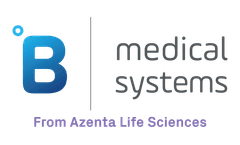Refine by
Molecular Analysis Articles & Analysis
11 articles found
In these situations, even minor limitations in monitoring capability can lead to hypoxemia, a leading cause of morbidity and mortality during surgical procedures, making accurate and responsive oxygen concentration monitoring a critical safeguard for patient outcomes.4Recognizing the vital importance of precise oxygen monitoring, Cubic, an international manufacturer of advanced gas sensors and ...
This technique is vital for a variety of applications, including histological studies, immunohistochemistry, and molecular analysis. Why Use Mouse C57 Models? The C57BL/6 mouse strain, commonly referred to as C57, has become a standard in biomedical research due to its well-documented genetic background and immune system. ...
By simulating conformational changes, folding processes, and functional mechanisms of proteins, it provides valuable insights into the structure-function relationships, facilitating protein engineering and functional studies. Enzyme Mechanism Analysis: Molecular dynamics simulation contributes to the investigation of enzyme catalysis mechanisms. ...
The use of tumour markers to diagnose, assess prognosis, and select a suitable cancer treatment has become possible due to the development of inexpensive and user-friendly molecular analysis tools such as the polymerase chain reaction (PCR). Maintaining the integrity of biomarkers during their processing and storage is therefore of critical importance to ...
Type II restriction enzymes have been widely used in DNA molecular cloning and sequence analysis because they do not require ATP to hydrolyze DNA and do not methylate or otherwise modify DNA. ...
The lengthy battle between people and varied bodily, chemical, and organic insults that trigger cell damage (e.g., merchandise of tissue harm, metabolites, and/or infections) have led to the evolution of assorted adaptive responses. These responses are triggered by recognition of damage-associated molecular patterns (DAMPs) and/or pathogen-associated molecular patterns (PAMPs), normally by cells ...
Although with the emergence of molecular methods such as Terminal Restriction Fragment Length Polymorphism (TRFLP), Automated rRNA Intergenic Spacer Analysis (ARISA), Random Amplified Polymorphic DNA (RAPD), Denaturing Gradient Gel Electrophoresis, Single Strand Conformation Polymorphism (SSCP), microautoradiography (MAR) and Fluorescent in situ Hybridization ...
The paper discusses an alternative – unsupervised learning supported by functional genomic analysis. Recent work in West Africa on sorghum, African rice and white yam is described. ...
Algorithms that infer phylogenetic relationships between serially-sampled sequences have been developed in recent years to assist in the analysis of rapidly-evolving human pathogens. Our study consisted of evaluating seven relevant methods using empirical as well as simulated data sets. In particular, we investigated how the molecular clock hypothesis affected ...
A total of 26 strains of Vibrio cholerae, including members of the O1, O139, and non-O1, non-O139 serogroups from both clinical and environmental sources, were examined for the presence of genes encoding cholera toxin (ctxA), zonula occludens toxin (zot), accessory cholera enterotoxin (ace), hemolysin (hlyA), NAG-specific heat-stable toxin (st), toxin-coregulated pilus (tcpA), and outer membrane ...
Rajiv Gandhi Centre for Biotechnology, Jagathy, Thiruvananthapuram 695 014, India; Center for Marine Biotechnology, University of Maryland Biotechnology Institute, Baltimore, Maryland 212022; Department of Cell and Molecular Biology, University of Maryland, College Park, Maryland 207426; School of Public Health, University of São Paulo, São Paulo, SP, 01246-904, São Paulo, ...









